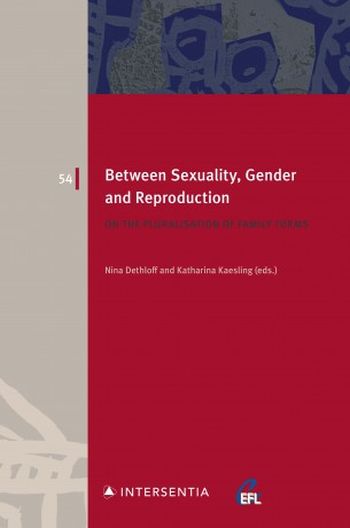
This edited volume examines the diversity and pluralisation of family concepts that are subject to change as a result of the no longer self-evident interrelationships between sexuality, gender and reproduction. The focus is on the manifold challenges for jurisprudence and legislation brought about by today’s pluralisation of family forms and on divisive tensions that accompany the social and normative transformations. Same-sex partnerships, LGBTQI+ families and self-determination regarding one’s gender are increasingly recognised and treated equally. Assisted reproductive technology leads to a possible severance of biological, genetic and social family links. Against this background, how should legal concepts of partnership, family and parenthood be constructed in the future? How do the highest courts and human rights help shape new legal approaches? What are the common trends of co-existing legal systems? Where does the international community of states risk breaking apart? To answer these questions, this book brings together international expertise, namely from Australia, Austria, Germany, Poland, Portugal, South Africa and the USA.
The book begins by discussing the dependence of the legal framework governing sexuality, gender and reproduction on the changing foundations of the family organisation and economy in Western countries. Having identified common trends in European legal orders, the question arises whether there is a common core of the diverse legal cultures. A key example of the plurality of family forms leading to a plurality of legal regulations within one legal system is South Africa, which is taken into focus. The overarching significance of religion and churches for the concept of family in co-existing legal systems must also be taken into account. Furthermore, with regard to the highest courts, particularly the European Court of Human Rights (ECtHR) and the Court of Justice of the European Union (CJEU), important landmarks can be identified that shape past and present legal developments in relation to sexuality, gender and reproduction. However, these developments are also accompanied by threateningly divisive tensions. Moreover, they raise the question of the role of genetic links concerning parenthood, which are approached with regard to legal adjustments in Portugal and the jurisprudence of the ECtHR. Social recognition of diverse family forms is not only a matter of legal regulation, but also of representation of family images in the social realm, namely in art and (new) media, which in turn are also the object of increasing legislation.
Between Sexuality, Gender and Reproduction will be of interest to researchers, lecturers and students. Through this book, they are invited to find inspiration and ideas for the ongoing academic discussion.